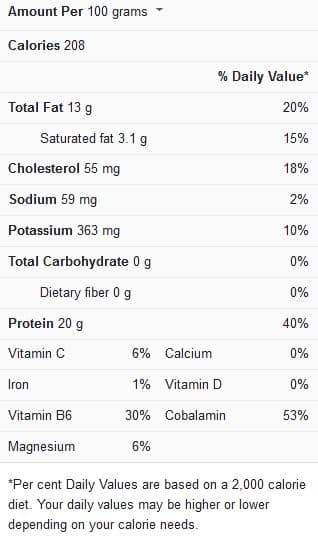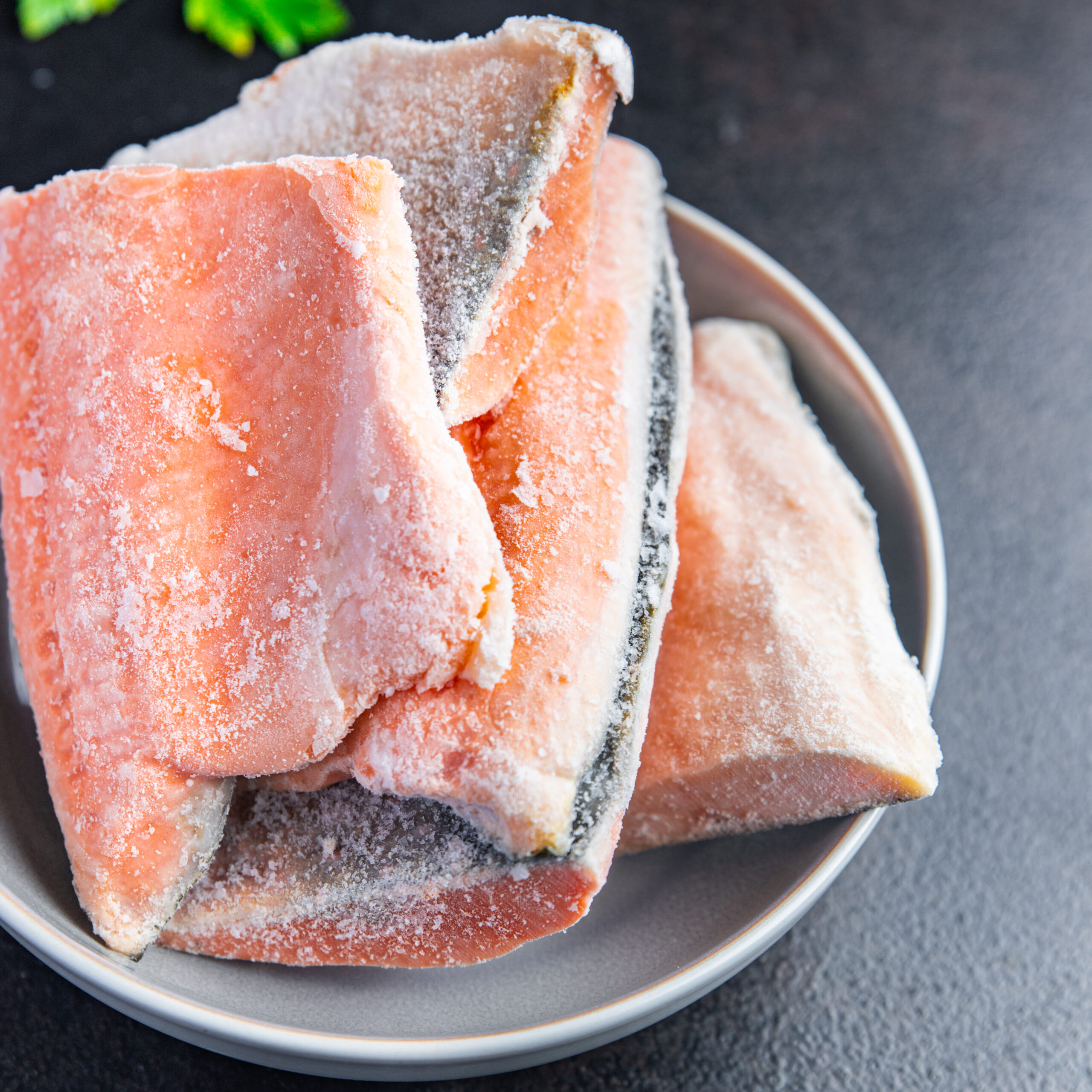It’s always a good idea to have a bag of frozen salmon filets on hand as this means that you can make a quick and nutritious meal whenever you please. Because most filets tend to be thin, they can be cooked safely without any need to defrost them first. Choose which cooking method you prefer, whether it’s stovetop cooking, oven baking, or grilling.
Suppose you’d like to learn how to cook frozen salmon filets to maximize flavor and nutrition; pay attention to the guidelines in this article. We have also included some helpful tips to ensure that you always get the best results with your recipe.
Salmon nutrition facts

Tips for cooking frozen salmon filets
You’ll find that the following tips are really helpful for cooking frozen salmon filet recipes, so we recommend that you pay close attention:
Not all salmon can be cooked from frozen – The methods outlined in this article are effective for all types of frozen salmon filets, but not for larger chunks of salmon, which tend to take a significantly longer amount of time to thaw.
That being said, smaller salmon filets in the 6-ounce bracket perform better with this cooking procedure. Larger salmon sides should be saved for optimal thawing and frying.
Cooking methods to try – There are some cooking methods to ensure optimal results with frozen salmon filet recipes:
Pan-frying frozen salmon filets
Cooking salmon is achievable in a skillet through the regular steps, but with a few key changes when working with frozen salmon filets. Consider the following helpful tips:
- Using cool water, rinse the salmon filets: This is necessary to remove any ice developed on the outside. Using paper towels, dry them afterward.
- Before cooking the salmon, don’t season it: This may be a grave offense, but consider that salt cannot infiltrate a frozen block of any fish. Before seasoning the fish, please wait until it has been pan-fried properly on one side, then flip.
- In a skillet, cook the salmon skin-side up: Using a large, nonstick pan or skillet, heat your oil over medium heat. Place the salmon in the skillet, with the skin-side facing up, then heat the filets until the meat side is browned (this should take about 4 minutes).
- Season the salmon on the other side: Make sure to generously season the fleshy side of the salmon with salt, pepper, and any other seasonings you prefer. Use a lid to cover the skillet to keep the heat, then leave the salmon to finish cooking. Please make sure the skin is resting on the hot pan when it’s steaming so that the filet crisps up rather than going mushy.
Cook for 7 to 9 minutes, depending on the size of the salmon until it develops an opaque quality throughout and flakes readily when a paring knife is inserted between the layers.
Grilling frozen salmon filets
One thing to try is brushing frozen salmon filets with a marinade and wrapping them in grape leaves (they are edible). The grape leaves prevent the filets from adhering to the grill, which is the key to grilling salmon from a frozen state. Follow these easy steps during the cooking process:
- Heat the grill for direct and indirect medium-high heat.
- Using cool water, rinse the salmon filets; do this to eliminate any ice that has developed on the outside of the filets. Afterward, using paper towels, pat them dry.
- Season the salmon salt and pepper after you brush with olive oil: Season the salmon with salt, pepper, and any additional seasonings of your preference (lemon zest is a great idea!) after brushing it with olive oil.
- Wrap grape leaves around each filet: Place one grape leaf veiny side up on a clean working area with the tip pointing opposite you. Place another leaf on top of the first, overlapping it by about 1 inch. Make a single line with two other grape leaves if you’re working with large-sized ones or three more if they’re little. Place a salmon filet on top of the grape leaf closest to you, then roll up the salmon inside the overlapping grape leaves while holding the leaf.
- Direct heat should begin grilling filets, and indirect heat should be used to finish them: Grill over direct fire, flipping halfway through, for about 5 minutes, or until the grape leaves turn brown in some areas. Move the wrapped filets to the portion of the grill with indirect heat, cover, and cook until the salmon is entirely opaque, about 12 minutes according to filet thickness.
View this post on Instagram
Cooking Time for Frozen Salmon Filets
The following timing guidelines are ideal for achieving desirable results with frozen salmon filet recipes:
Cooking procedure
Cooking time
Pan-frying salmon fillets on the stovetop
7 to 9 minutes
Grilling frozen salmon filets
12 minutes
Baking frozen salmon fillets in the oven at 425 F
23 to 25 minutes
Print
Oven-baked frozen salmon (2 servings)
Ingredients
- 2 (6-ounce) frozen salmon filets (make sure not to thaw)
- Three tablespoons of Dijon mustard
- Two teaspoons of maple syrup
- Two cloves of garlic, minced
- ½ teaspoon of red pepper flakes (optional ingredient)
- ½ teaspoon of kosher salt
Instructions
- Preheat the oven to 425°F, making sure to place a rack in its middle. In an 8×8-inch baking dish, arrange the frozen salmon fillets with the skin side facing down.
- In a small mixing bowl, combine the mustard, garlic, maple syrup, red pepper flakes (if you choose to use it), and salt.
- Spread the resulting mixture evenly on the salmon using a brush or a spoon.
- Aluminum foil should be tightly wrapped around the baking dish. Roast the salmon filets for 15 minutes or until they can be pierced through entirely with only a small, frosty resistance.
- Remove the foil with care. Continue roasting the salmon for another 8 to 10 minutes, or until the salmon filet can easily be split with a fork or until a probe thermometer placed in the thickest portion of the fish reads 145°F. Because wild salmon cooks faster than farm-raised fish, start monitoring it at 8 minutes. The flesh should ideally be moist but not transparent or raw.
- Take the salmon out of the oven and set it aside to rest for 3 minutes, uncovered. Serve alongside a dish of quick pasta or a hearty salad.
If you’d like some more inspiration on working with frozen salmon filet in your recipes, you may be interested in this video recipe.
